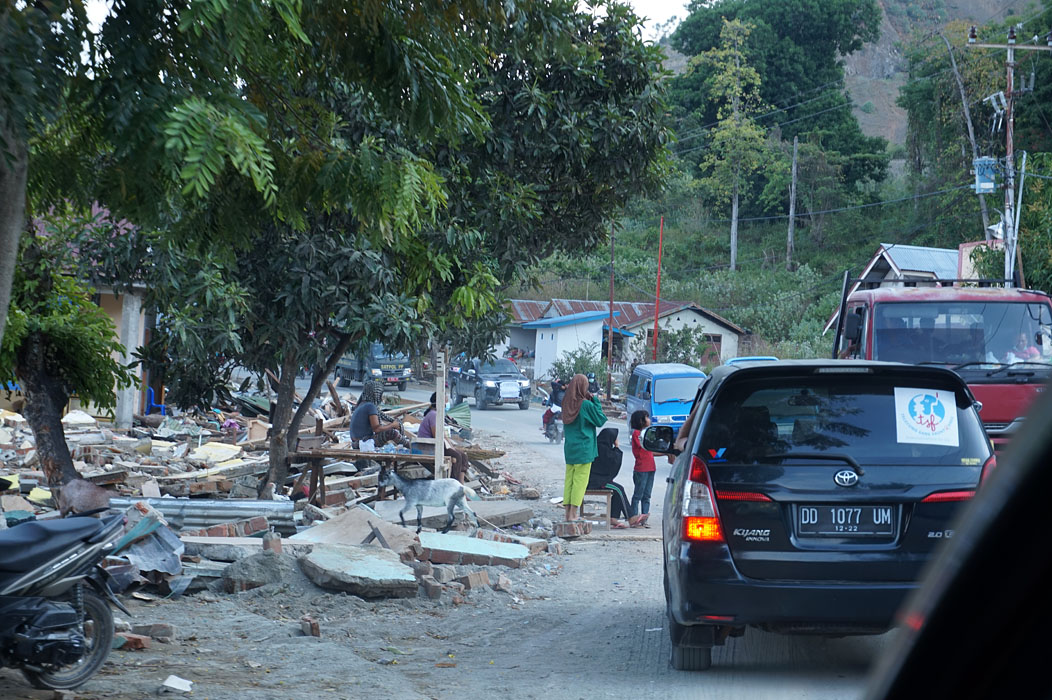Sulawesi earthquake
Context: Earthquake
Start date: 28/09/2018
End date: 19/10/2018
Areas of intervention: Sulawesi Island
Activities:
- Support to coordination
- Humanitarian calling operations
- Ambulant Wi-Fi
1 Internet centre for humanitarian coordination
10+ organisations supported
480+ beneficiaries
100 GB of data exchanged for humanitarian coordination
7 Communities connected
Context
On September 28, the Pacific nations issued a tsunami warning after a magnitude 7.5 earthquake hit the island of Sulawesi. At 4 pm, the deadly wave hit the cities of Palu, capital of the island's central province, and the small town of Donggala. Following the earthquake, several strong aftershocks, including one of magnitude 6.7, hit the area.
At least 2,000 people were killed and 200,000 displaced. In view of the scale of the catastrophe, the Indonesian government decided to accept International assistance on October 2nd.
Everything within 200m from the coast was ravaged by the Tsunami, while the earthquake caused widespread devastation: landslides and damages to buildings and infrastructure. Some villages and neighbourhoods in Palu have been completely destroyed.
The infrastructures of the three national telecom operators were severely damaged, making communications very difficult. The Donggala area was totally disconnected and only one operator partially worked in some areas of the city of Palu. In addition, the considerable damages on roads and airport infrastructures represented a challenge to the arrival of humanitarian organisations in this area, making relief operations very difficult.
Deployment
Upon the announcement of the disaster, Telecom Sans Frontières deployed two teams with emergency satellite equipment, from the headquarters and base Asia. After a brief transit in the city of Makassar (in the south of the Sulawesi island), they went to Palu to offer technical expertise to rescue teams and affected populations. Since commercial flights, from Makassar to Palu, were cancelled, the team reached Palu by car. The trip took over 40 hours, but TSF was still the first International organisation to reach the affected area.
Support to national coordination
TSF was solicited by the Association of Southeast Asian Nations (ASEAN) to reinforce the support of their emergency response and evaluation teams (ERAT) to the Indonesian National Agency for Disaster Management (BNPB) and local authorities.
Thus, as soon as they arrived in Palu, one of the most affected areas, TSF engineers installed an Internet connection for the ERAT humanitarian coordination centre. Other on-site organisations benefited from the facilities of this centre.
This satellite connection facilitated the work of humanitarian actors. They were able to send their reports and transmit information on humanitarian needs. This connection was also important for the logistics organisation from Jakarta and Makassar.
Humanitarian calling operations
In parallel, TSF teams deployed in the south and north of Palu assessed needs in the localities closest to the epicentre. The teams carried out mobile humanitarian calling operations in isolated communities to enable them to contact their relatives, but also to seek help.
TSF’s mobile teams were sent to more villages along the coast between Palu and the epicentre in the north to provide the most isolated victims with temporary Internet access. These operations allowed them to use their cell phones to connect to their social networks, instant messaging platforms and communicate via voice or video.
























